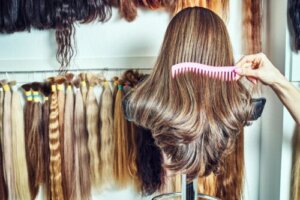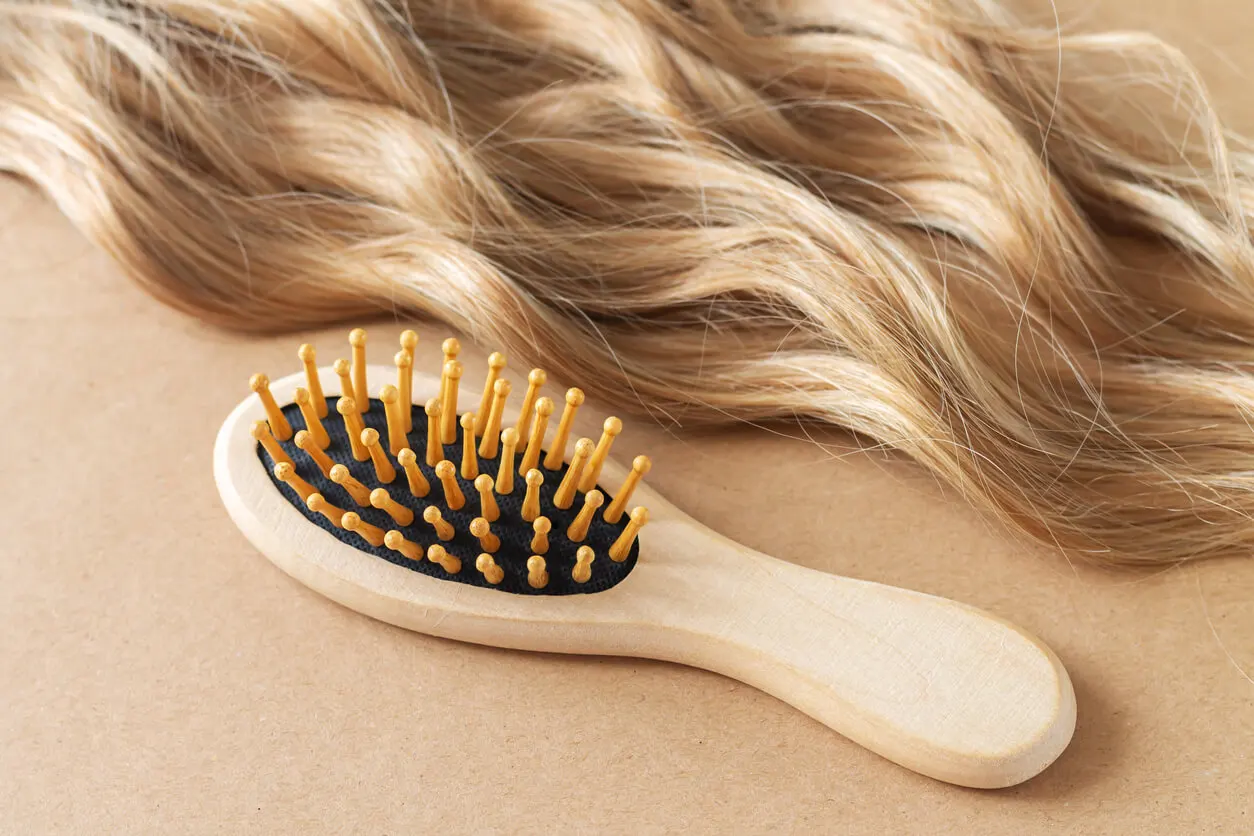How to Wash a Natural Hair Wig

Washing a natural hair wig is an important part of the wearer’s hygiene. These alternatives allow you to change your look just by trying different styles of hairpieces and without resorting to dyes, straightening, or scissors. Hairpieces and hair prostheses have gone way beyond aesthetic purposes, since they’re also ideal to overcome diseases or conditions that affect the hair.
According to a publication in the Journal of the Faculty of Medicine of the Autonomous University of Mexico, wigs satisfy physical, aesthetic, and social needs. We must understand that hair is part of the body and that it reflects the state of its wearer. Let’s see how to keep them in optimal conditions.
Types of wigs
The reason for wearing a wig is important when deciding what type to wear. There are some people who are simply looking for a hairstyle that doesn’t require so many alterations or that reduces their visits to the hairdresser; there are also people who don’t want to subject their hair to irons, hair dryers, or curling irons.
On the other hand, some people use these accessories to hide alopecia or hair loss caused by chemotherapy or radiotherapy. In these cases, institutions such as the American Association Against Cancer provide guidance on the process to acquire the appropriate wig.
In general, there are the following types:
- Synthetic wigs: These are made with fiber hair. You can’t blow-dry or iron them.
- Handmade wigs: The hair is manually inserted into a tulle for these wigs; it uses natural or synthetic strands.
- Machine-made wigs: In this case, the hair is sewn by machine onto a mesh to create several wefts. They often look unrealistic due to the volume.
- Mixed wigs: These combine natural and synthetic strands. The upper part is usually handmade, and the lower part is typically machine-made.
- Natural wigs: These use human hair. They last much longer, as they’re of higher quality. You can dry, iron, or curl them and maintain them with the guide we’ll provide below.

We think you may be interested in reading this, too: 9 Tricks for Waving Hair Without Using Heat
A guide for washing a natural hair wig
Hairpieces require careful care so as not to damage them, since a weighty factor that influences their acquisition is the price. Some wigs are very expensive.
The cleaning of such pieces requires special products, such as clarifying agents for human hair wigs. Another alternative is mild shampoos for colored hair. When cleaning a natural hair wig, make sure to follow the tutorial below.
Untangle the wig
The way to prepare the natural wig before immersing it in water is to untangle it with a wide-toothed comb. Untangle sections from the ends to the roots. For best results, untangle stubborn knots with your fingers.
Soak the wig
Pour cold water into a bowl and add a little clarifying shampoo. On the reverse side, place the wig in the bowl, without scrubbing, for 5 minutes.
Rinse the natural hair wig
Remove the lather by letting the cold water drain from the base to the ends. When there are no more traces of the shampoo, take a towel and dry carefully. The key is to keep the hairpiece damp, but not soaked.
Condition the wig
Conditioner should also be spot on for wigs. From below, spread a little of the product until it covers the piece without touching the base. Use your fingers to comb through the strands. Wait 5 minutes or the time indicated in the cosmetic instructions. Again, wet and rinse with cold water, until there’s no more conditioner in the wig.
Moisturize it
As if it were real hair, apply a few drops of moisturizing oil. This can be argan oil, coconut oil, or cotton oil.
Dry the wig
Finish the wash by drying the wig first with a towel and then airing it out for a while. finally, style with a hair dryer if you wish. To keep it in shape, it’s key not to brush or use the dryer if it hasn’t been exposed to natural air yet.
We think you may also enjoy reading this article: 9 Foods You Should Eat to Boost Hair Growth
Recommendations to extend the life of a natural hair wig
Although washing a natural hair wig will shorten its life span, the usual recommendation is to wash it every 2 weeks. However, some people bring this up to once a week or when they notice that the wig is too dry or sticky. Wear a wig cap underneath and remove it before going to sleep and avoid getting it wet frequently.
Keep in mind that when it comes to natural hair wigs, conditioners and moisturizing oil are important. Remember that these flaky strands, processed and implanted in a mesh, are not nourished by the scalp’s own oil.
Other ways to make them last longer are as follows:
- Keep the wig in a wig stand.
- Don’t wet natural wigs with hot water, swimming pool water, or salt water.
- Avoid hair spray and gel.
- If you dry the wig with the hair dryer, don’t forget to use a thermal hair protector.
- If you want to dye it, have it done in a specialized center.

Prevent dermatological complications from the use of wigs
For the sake of your health, don’t stick a wig to your head with adhesive tape, glue, or other substances, as you run the risk of suffering alterations such as follicular lichen planus. This condition is capable of triggering scarring alopecia, explains an article in the journal Actas Dermo-Sifilográficas.
Give your scalp a break by not wearing a wig so often or alternating with comfortable hats, scarves, and caps.
All cited sources were thoroughly reviewed by our team to ensure their quality, reliability, currency, and validity. The bibliography of this article was considered reliable and of academic or scientific accuracy.
- American Cancer Society. Cómo elegir y usar una peluca. Estados Unidos; 2020. https://www.cancer.org/es/tratamiento/tratamientos-y-efectos-secundarios/efectos-secundarios-fisicos/caida-del-cabello/como-elegir-y-usar-una-peluca.html
- Cabanillas M, Durana C, Monteagudo B, Vilas-Sueiro A. Liquen plano folicular causado por una peluca: fenómeno de Koebner inusual. Actas Dermo-Sifilográficas. Vol. 107. Núm. 5. Academia Española de Dermatología y Venereología. España; 2016. https://www.actasdermo.org/es-liquen-plano-folicular-causado-por-articulo-S000173101500561X
- Fortoul van der Goes T. Las pelucas en la historia y su relación con la medicina. Revista de la Facultad de Medicina. Universidad Nacional Autónoma de México. Vol. 61. Núm .3. México; 2018. http://www.scielo.org.mx/scielo.php?script=sci_arttext&pid=S0026-17422018000300057
This text is provided for informational purposes only and does not replace consultation with a professional. If in doubt, consult your specialist.








